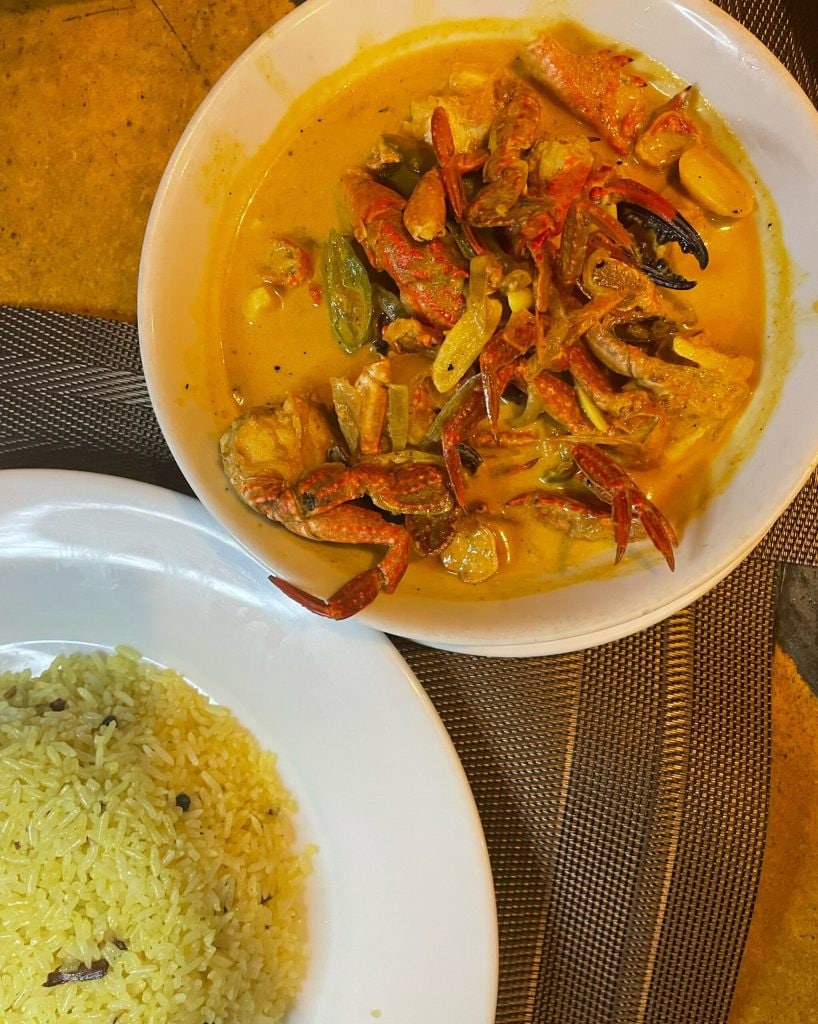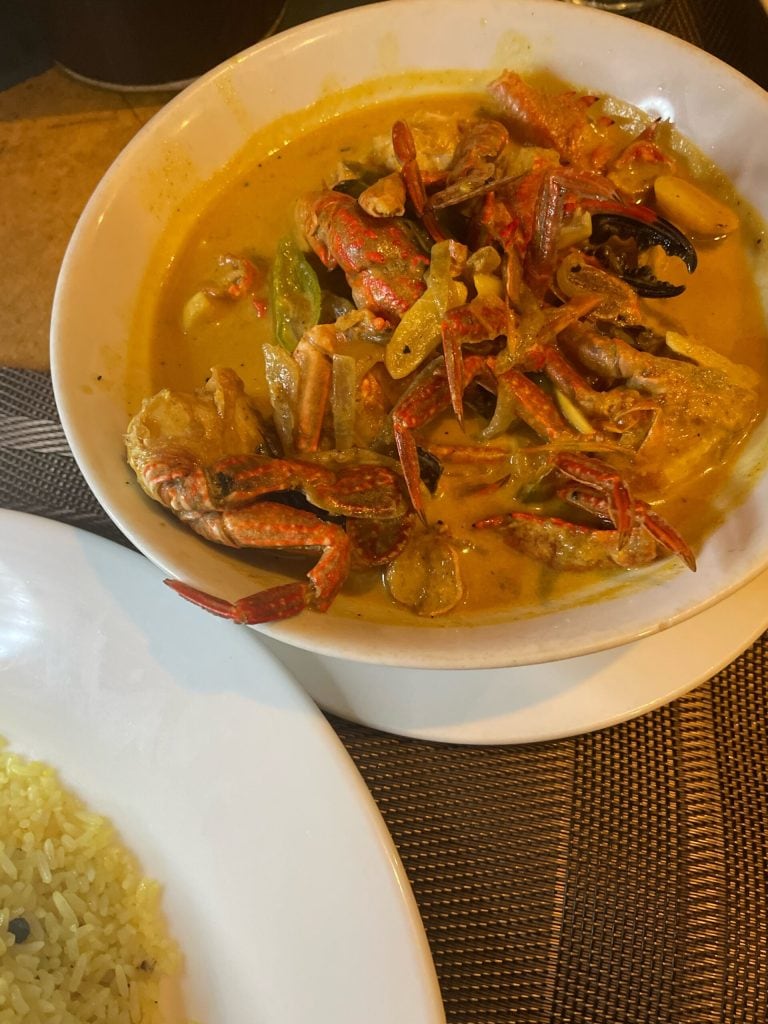The Jaffna Crab Curry — also known as Kakuluwo Curry, in Sinhalese කකුලුවෝ කරි, meaning crab curry, is traditionally attributed to the Jaffna region in northern Sri Lanka, but is widespread along all the coasts.
It is one of the country’s most celebrated curries, often referred to as a “feast” dish when fresh crab is available. It expresses the rich marine bounty of the Sri Lankan coasts: where crab is abundant and fish/seafood is central to the diet.
It is a symbol of celebration: in traditional menus, when the family can afford “crab curry”, it is a special moment.
Prepared with:
Crab (often mud crab or blue swimmer) cut into pieces, with shell.
Coconut milk or grated coconut: a common element on the coasts of Sri Lanka.
Sri Lankan curry powder (Jaffna curry powder), chili, curry leaves, sometimes tamarind or lime for acidity.
It represents a cultural fusion: Dravidian/Indian spices + local ingredients (coconut, crab), in a seafood cuisine.
The following recipe is the traditional version from the Jaffna region, considered one of the most famous variants in Sri Lanka.
Some versions include tamarind for acidity; in the family variant from Jaffna, lime is preferred.
The Kakuluwo Curry tends to be classified in the miriṣāta category (dry-ish, very spicy) or in the intermediate range: not completely “wet” like creamier curries, but not totally dry either.
This was tasted in Hikkaduwa during our trip to Sri Lanka in October 2025.

- Difficulty: Easy
- Preparation time: 5 Minutes
- Portions: 4People
- Cooking methods: Boiling
- Cuisine: Sinhalese
- Seasonality: All seasons
Ingredients
- 2.2 lbs crab (preferably blue swimmer or mud crab, cut into pieces)
- 1 tbsp coconut oil
- 1 onion
- 2 cloves garlic
- 0.5 oz fresh ginger
- 25 leaves curry
- 1 1/2 tsp Jaffna curry powder (or curry powder)
- 0.42 cup coconut milk
- 1 lime
- to taste salt
Steps
If the crab is alive: put it in the freezer for 1 hour to immobilize it, then remove the bottom plate, the head, rinse and cut into pieces.
Heat the oil in a large pot over medium heat. Add the onion and cook for 3-4 minutes until soft. Add sliced garlic and sliced ginger, cook for 1 minute until fragrant.
Add the curry leaves, then the curry powder, stir for about 30 seconds to release aromas. Add the crab, salt, and brown for 3-4 minutes, stirring well. Pour enough water or broth so that the crab is about halfway submerged. Bring to a boil, then lower the heat and cover. Cook for 15-20 minutes (the crab will turn pink). Add the coconut milk, stir and cook for another 3-5 minutes.
Turn off the heat, add the lime juice. Stir and serve immediately with white rice or “pittu”.


FAQ (Frequently Asked Questions)
Why do Sri Lankans, like Indians, sometimes bob their heads when speaking?
The characteristic head wobble – often called a head wobble or head bobble – is a very common form of non-verbal communication in Sri Lanka and India.
Here’s why it is used:
Sign of agreement or confirmation
It’s a variant of our “yes” but less definitive: it can mean “alright”, “I understand”, or “ok, go ahead”.
It doesn’t always mean a direct “yes”, but an openness or willingness.
Expression of empathy or listening
During a conversation, it is used to show that one is following the discussion attentively and respectfully.
Nuanced or neutral response
In many South Asian cultures, saying “no” directly is avoided. The head movement can be an ambiguous or diplomatic response, leaving room for interpretation.
Deep-rooted cultural habit
It’s a body language learned from childhood and culturally shared. It has many nuances and those who grow up in that context recognize them naturally.
In practice, it’s a multifunctional gesture that can take on different meanings depending on the context, the tone of the conversation, and the facial expression accompanying it.

